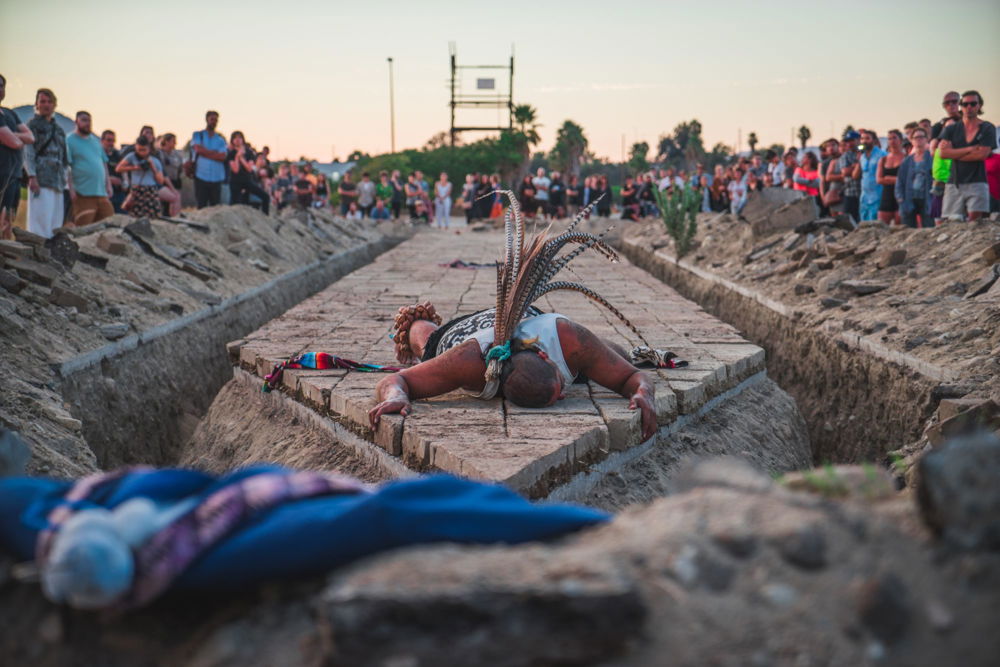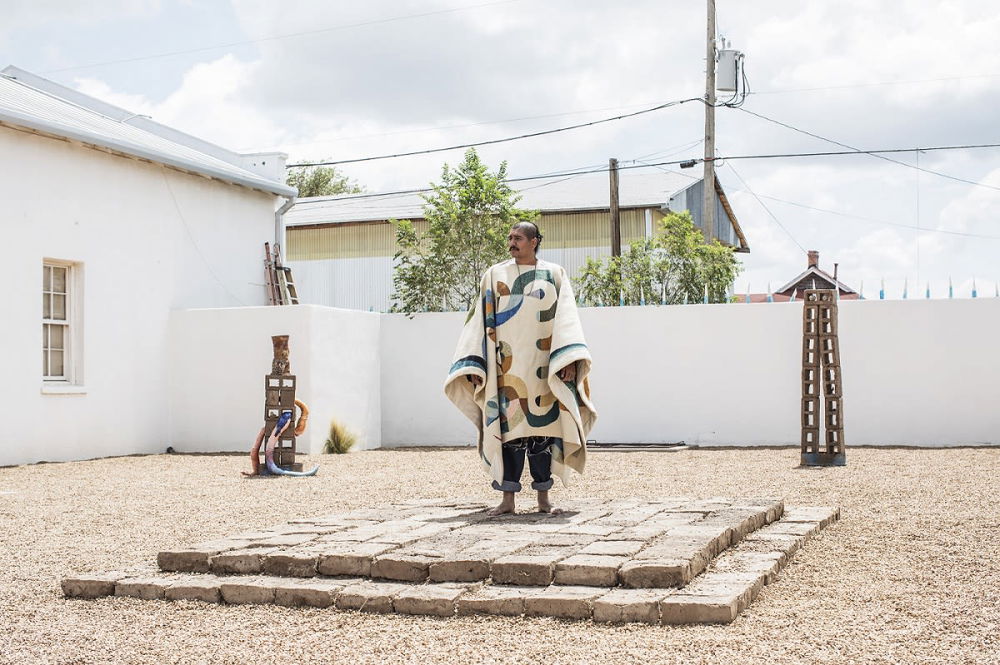
Photo by Stefan Ruiz.
rafa esparza is a multidisciplinary artist who was born, raised, and currently lives in Los Angeles. Woven into Esparza’s bodies of work are his interests in history, personal narratives, and kinship. He is inspired by his own relationship to colonization and the disrupted genealogies that it produces. Using live performance as his main form of inquiry, he employs site-specificity, materiality, memory, and what he calls (non)documentation as primary tools to investigate and expose ideologies, power structures, and binary forms of identity that establish narratives, history, and social environments. His recent projects have evolved through experimental collaborative projects grounded in laboring with land vis-à-vis adobe brick-making, a skill learned from his father, Ramón Esparza. In so doing, the artist intends to divert institutional resources to invited Brown and Queer cultural producers to realize large-scale collective projects. In the process, he gathers people together to build networks of support outside of traditional art spaces. He is especially committed to working in the local geographies that are the Southwest, including Mexico and Latin America.
He is a recipient of an Emerging Artist 2014 California Community Foundation Fellowship for Visual Arts, a 2014 Art Matters grantee, and a 2015 recipient of a Rema Hort Mann Foundation Emerging Artist Grant. He has performed in a variety of spaces, both public and private, throughout Los Angeles, including Elysian Park, the Los Angeles River, AIDS Project Los Angeles, Highways Performance Space, REDCAT, Human Resources, Vincent Price Art Museum, LACE (Los Angeles Contemporary Exhibitions), and the J. Paul Getty Museum. Esparza has also shown throughout the United States in art institutions such as the Whitney Museum of American Art, the Bemis Center for Contemporary Art, and Ballroom Marfa, and internationally at Oficina de Procesos, Mexicali, and El Museo del Chopo in CDMX.
Donor -This award was generously supported by The Andrew W. Mellon Foundation.
This artist page was last updated on: 07.08.2024




